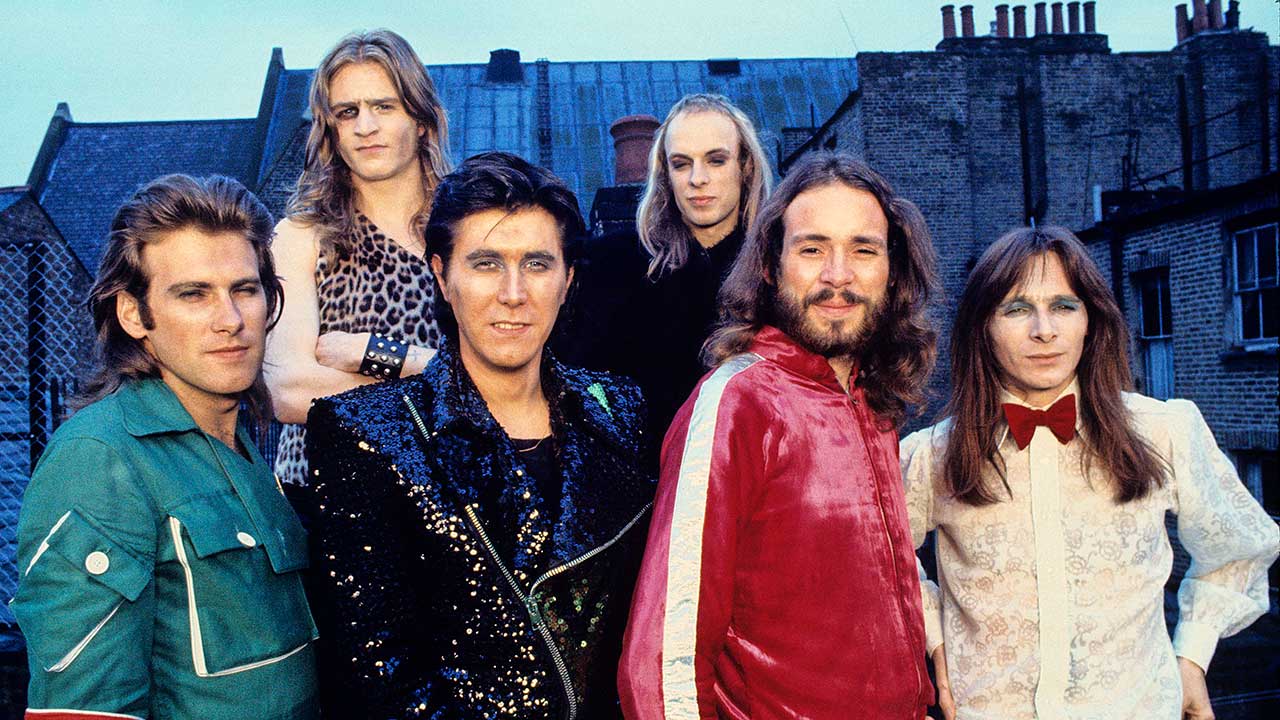Wagner, fist fights, and the making of Roxy Music's debut album
The production on Roxy Music's eponymous debut album may have been far from ideal, but it catapulted them straight into the big time

It took weeks to record, with an odd choice of producer and no record label involved. But it kick-started an iconic career. The album was 1972’s self-titled debut by Roxy Music, and it contained all the elements that would make them legendary. And for guitarist Phil Manzanera it was a hectic time. “I was only officially confirmed in the band on February 14, 1972, and a month later we were in the studio.”
Manzanera had auditioned the previous October, but lost out to former Nice man David O’List. But when the band played in front of EG Management in early February ’72, there was a fight between O’List and drummer Paul Thompson. As a result, EG took on the band but insisted on O’List going.
So in came Manzanera, joining Thompson, frontman Bryan Ferry, bassist Graham Simpson, synth player Brian Eno and saxophonist Andy Mackay. And, funded by EG, Roxy went to Command Studios in central London on March 14, working with producer Pete Sinfield, best known as the lyricist for King Crimson. “EG managed him, so they kept it in the family. I don’t why he was chosen, but the good thing is that Pete let us get on with it.”
Roxy recorded live in the studio, with few overdubs. But the band had rehearsed so much that they were ready to do it this way. “We were a band of inspired amateurs back then, who worked very hard and had lots of enthusiasm. And the album has a charm all of its own as a result.”
The songs were written by Ferry, bearing a number of cinematic references, something that delighted Manzanera. “That’s one of the things the two of us bonded over – we loved films. And to hear something like 2HB, with its tribute to Humphrey Bogart, or Chance Meeting [inspired by the classic movie Brief Encounter] was just incredible. Bryan had so many ideas, and I always thought the rest of us provided the music for his words.”
The opening song, Re-Make/Re-Model, actually sums up the band’s eclecticism, with nods to The Beatles, Duane Eddy and… Wagner. “We all got the chance at the end to do our own thing. It’s a mad journey with lots of energy and it’s so exciting. It immediately says who we were – a band who would try anything."
While Roxy had a big hit with Virginia Plain later in 1972, reaching No.4 in the chart, this was recorded four months after the album and not included in the track listing. “In those days, we liked to keep singles separate and not feature them on albums.”
Sign up below to get the latest from Classic Rock, plus exclusive special offers, direct to your inbox!
Apart from the music, what immediately stands out is the cover, featuring model Kari-Ann Muller. It set Roxy apart from almost everyone. “This cover was so striking that we’re going to be using it to promote our January UK tour – it still looks so good even now.”
The album was eventually released through Island, thanks to a licensing deal done by EG. “We got £5,000 from the label for a five-year lease. In those days, that was very innovative. I know EG had to fight to persuade some people at Island to put this out. But it did well for them.”
The Roxy Music album reached No.10 in the UK charts, selling over 100,000 copies. As Manzanera concludes: “This was just the beginning. The rest is history.”
Malcolm Dome had an illustrious and celebrated career which stretched back to working for Record Mirror magazine in the late 70s and Metal Fury in the early 80s before joining Kerrang! at its launch in 1981. His first book, Encyclopedia Metallica, published in 1981, may have been the inspiration for the name of a certain band formed that same year. Dome is also credited with inventing the term "thrash metal" while writing about the Anthrax song Metal Thrashing Mad in 1984. With the launch of Classic Rock magazine in 1998 he became involved with that title, sister magazine Metal Hammer, and was a contributor to Prog magazine since its inception in 2009. He died in 2021.

